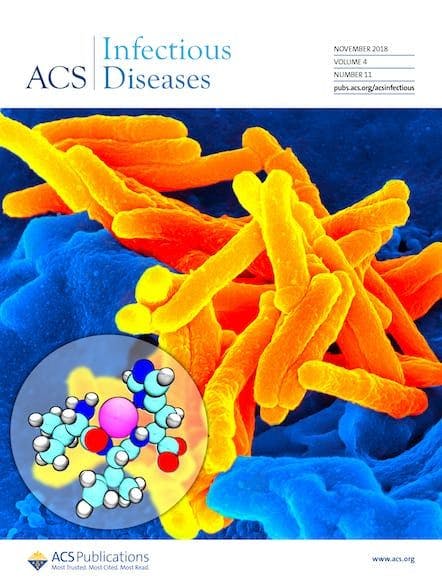This year's award recognizes three outstanding early-career investigators conducting infectious diseases research. Learn more about the 2025 winners, Clarissa Melo Czekster, Dmitry Lyumkis, and Aran Singanayagam.
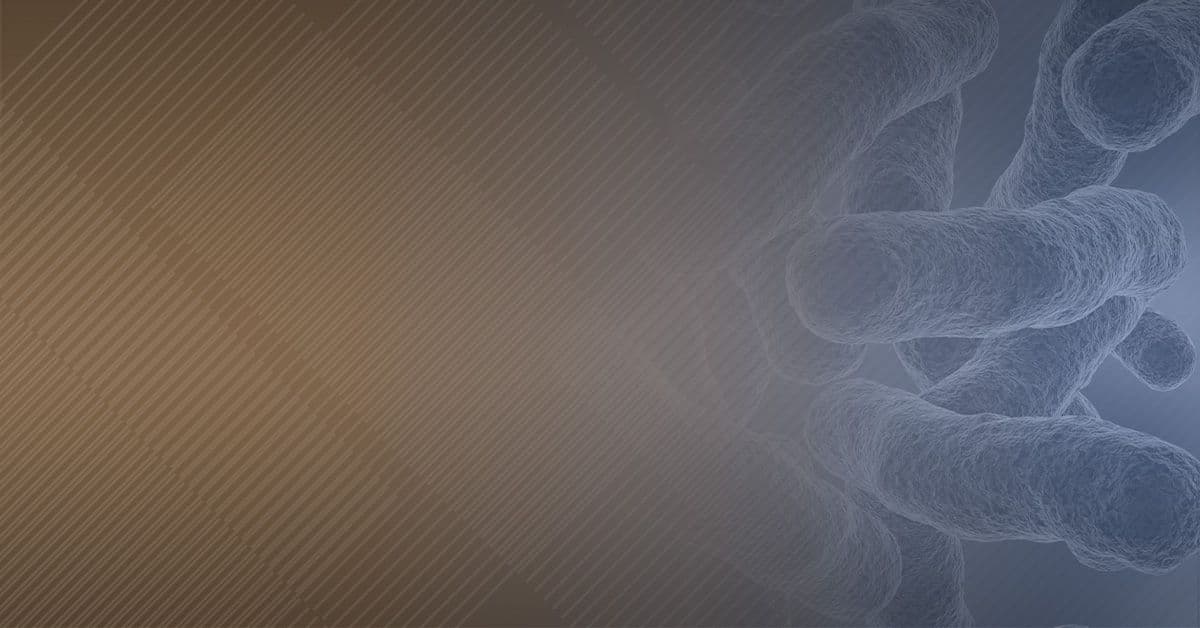
The 2025 ACS Infectious Diseases Young Investigator Award recognizes three outstanding early-career investigators conducting infectious diseases research. The award honors the recipients’ contributions to the field of infectious diseases research at an early stage in their careers.
The Editors of ACS Infectious Diseases and the ACS Division of Biochemistry and Chemical Biology (BIOL) are pleased to announce the winners of the 2025 ACS Infectious Diseases Young Investigator Joint Lectureship Awards:
- Clarissa Melo Czekster, University of St. Andrews
- Dmitry Lyumkis, Salk Institute
- Aran Singanayagam, Imperial College, London
The awards will be presented at ACS Fall 2025 in Washington, DC, on Monday, August 18 from 2-6 PM.
Read on to learn more about each winner and their work.
Dr. Clarissa Melo Czekster
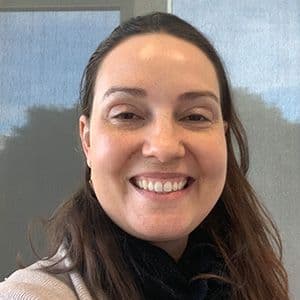
Clarissa Melo Czekster is a Reader in the School of Biology at the University of St Andrews.
What is your history with the journal?
I have published extensively on biochemistry and chemical biology, and since 2006 have been working with human pathogens such as Mycobacterium tuberculosis, Pseudomonas aeruginosa, Escherichia coli and Staphylococcus aureus. I am an avid reader of ACS Infectious Diseases as it publishes high quality papers in my area of expertise.
What inspired you to pursue your area of research?
Throughout my career I have been interested in enzymes, and in using enzymology and protein biochemistry to develop new treatments, tools and in the process uncover new and exciting biology. Research in my lab is focused on two main areas of research: understanding and engineering enzymes to produce medically relevant compounds and on dissecting mechanisms and structure of enzymes that are crucial for bacterial communities called biofilms. I believe we can make a significant contribution to this as no drug in the market specifically targets biofilms, which are present in the majority of chronic human infections.
What’s next for your research?
I am very interested in the human gut microbiome and on complex microbial communities. We are pursuing compounds and enzymes that are shared between these communities and therefore have great potential as novel drug targets and biofilm-specific therapeutics. With the help of outstanding collaborators, we are starting to integrate enzymology with genomics, metabolomics and proteomics to fully understand the impact specific compounds and key proteins have in bacterial communities.
On a molecular level, I am excited about advances in serial crystallography and on the power of combining fast kinetics with detailed structural information. This is a really exciting time to be a biochemist!
What problems in your field are you hoping to see solved in the next decade?
Can we develop novel strategies for which antimicrobial resistance takes longer to arise? By better understanding the biofilm lifestyle we hope to develop new drugs and combinations that affect bacterial fitness specifically in communities, which would have a profound impact in human health and chronic infections.
What would your advice be to someone just starting out in the field?
With social media, it often seems that everyone around us is succeeding, but I think science is, at its core, about failure and about what we do when something (an experiment, a hypothesis, a paper, an application for a job or a grant) does not go as we wanted or expected. When this happens, a solid foundation in physical chemistry and protein chemistry will come in handy, and resilience and self-reflection are key. Sometimes it is our fault and sometimes it is not, but in either case, we can learn and try a different (and hopefully better) strategy next time. Who knows? You might stumble into some really cool science you would have never considered, just because you needed to take a detour.
Prof. Dmitry Lyumkis
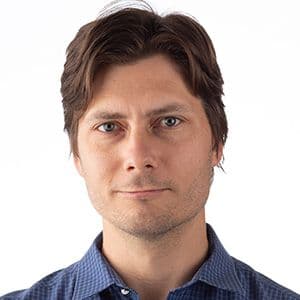
Dmitry Lyumkis is an Associate Professor at the Salk Institute for Biological Studies.
What is your history with the journal?
We’ve had a few papers in the ACS family of journals, and in fact we have a study that we recently completed that is currently under review. There are many great papers in my field published in the ACS family of journals. The ones that I read most tend to be published in ACS Chemical Biology and ACS Infectious Diseases, but I also read ACS Nano and ACS Medicinal Chemistry Letters from time to time.
What inspired you to pursue your area of research?
I was inspired by different ideas and people at different stages of my career. When I was in college, I took a hands-on molecular modeling course at my university, in which I learned about homology modeling, molecular dynamics, protein visualization, etc. That turned out to be my first experience with proteins. I found it fascinating to be able to play with protein models using a computer. When I was applying to graduate school, I decided to pursue work in the field of cryogenic electron microscopy (cryo-EM), which is a technique used to determine structures of proteins and protein assemblies. My graduate mentor, Bridget Carragher, as well as her colleagues, Jack Johnson and Ron Milligan, showed numerous 3D reconstructions of large protein assemblies obtained using an electron microscope that was located in their laboratory. This was when I realized the power of cryo-EM as a technology for diverse applications in structural biology. In graduate school, I used cryo-EM to determine the first structure of the human immunodeficiency virus (HIV) surface glycoprotein engaged by human neutralizing antibodies. When I began my lab as a Salk Fellow, I was thinking about my longer-term biological research pursuits. Having worked on HIV as a graduate student, I became inspired by the complexity of the virus, and the power of cryo-EM to elucidate many of its inner workings. Thus, I began a long-term pursuit to use cryo-EM to study how the virus inserts its genome into host chromatin, which is one of the hallmark events in the HIV replication cycle. We have clarified some of the key steps in this process, but are still trying to answer many fundamental questions.
What’s next for your research?
I’m really interested in several topics right now. The first is to understand how and why HIV develops resistance to antiretroviral therapy. It comes down to basic evolution. Resistance is simply the virus evolving mechanisms to deal with stress, which in this case comes in the form of therapeutic intervention. Just like we have developed mechanisms to combat viruses, e.g., through small molecule therapeutics, viruses have evolved mechanisms by which to outsmart our strategies for therapeutic intervention, by generating resistance mutations. Simply put, these are evolutionary processes that are playing out in front of our eyes. It turns out that understanding how the virus evolves resistance to therapy is challenging, because the mutations are stochastic, and the processes by which mutations are selected, and how mutations lead to drug resistance, are complex. The second topic in which I am interested is to understand how the host chromatin environment contributes to viral pathogenesis. Retroviruses, including HIV, must engage chromatin DNA to mediate infection. At the same time, the chromatin environment is complex, and the nature of retrovirus—chromatin interactions can be expected to be highly dynamic. We have been setting up numerous experimental tools in the lab to understand these processes. I am excited that we are now starting to get our first results, which we are preparing to share with the research community.
What problems in your field are you hoping to see solved in the next decade?
In the retrovirology field, I would like to see us make major inroads into developing better tools for “personalized therapy”, including for diagnostics and treatments. When we are concerned with HIV resistance to therapy, having a way to prognostically predict or forecast how drug resistant mutations may evolve, and then developing directed means through which to block the virus along the specific resistance pathway, would be a major step forward. This could also affect how diagnoses are made, and how treatments are prescribed. In the cryo-EM community, I would like to see us make inroads into directly visualizing the inner workings of the cell nucleus. Can we begin to interrogate, with atomic resolution, virus—host interactions inside the densely packed nuclear environment? Can we monitor dynamic events that are occurring in the nucleus, such as pre-integration complex trafficking on chromatin, in real time? Having the ability to couple static structures with real-time in situ dynamics would be exciting. Since several steps in the HIV replication cycle are targeted by antiretroviral therapeutics, having such tools and a deeper understanding of the biology would also provide us with better tools to address personalized therapy, i.e. the first point.
What would your advice be to someone just starting out in the field?
When you select a field or topic that is interesting to you, dig in as deep as you possibly can. Read the literature that is related to your work. Even more importantly, read the literature that may not be directly related, but is interesting and potentially relevant. Find time to read outside your field as well. Always try to identify possible connections to your work. I never cease to be amazed at how unexpected connections can meaningfully influence one’s thinking and understanding of complex topics. This is how some of the most creative work is done. If you do not know what you are interested in, that is ok. Keep looking, reading, and asking questions. Research is a never-ending journey through which we navigate. But when you stumble upon something interesting, do your due diligence and dig in, because you never know what will turn out to be the next major discovery.
Dr. Aran Singanayagam
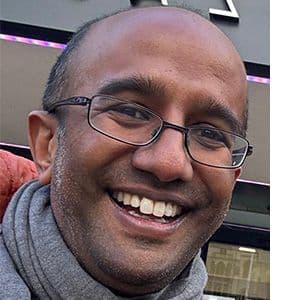
Aran Singanayagam is an MRC Clinician Scientist, Group Leader at the Centre for Bacterial Resistance Biology (CBRB) at Imperial College and a Consultant in Respiratory Medicine at the Royal Brompton and Harefield NHS trust.
What inspired you to pursue your area of research?
During my early clinical training, I was often exposed to patients suffering from chronic lung diseases such as asthma and COPD. There was a subgroup of these patients who kept coming back into hospital with repeated viral infections. The reasons for this susceptibility was unclear and I was struck by the distinct lack of therapies that were available to prevent these episodes. This inspired me to undertake mechanistic research to better understand what predisposes certain people to have recurrent infections with the hope that this understanding could lead to more effective therapies.
I have become specifically interested in the type I interferon pathway and its role in this context. In healthy people, the type I interferon response is ‘fine-tuned’ to ensure that the lungs rapidly clear invading viruses. In chronic lung disease, this pathway becomes disregulated and this adversely impacts the ability of the lungs to mount an appropriate response to clear infection. We are interested in understanding the underlying reasons why the type I interferon response is perturbed in patients with chronic lung disease.
What’s next for your research?
My research group currently investigate how commensal bacteria within the recently discovered airway microbiome impact upon the ability of the lungs to generate an appropriate type I interferon response. We have recently discovered that some commensal bacteria can boost the type I interferon response whilst others are inhibitory. We are now combining serial microbiome analyses in unique human viral experimental challenge studies and longitudinal naturally-occurring infection cohorts, to pinpoint commensals that correlate with viral susceptibility in chronic lung disease. We will then use functional microbiome manipulation experiments in human cells and animal models to understand cause and effect. We hope to mirror approaches taken in the gut microbiome field, where mechanistic studies have led directly to novel microbiome-targeting therapies e.g. faecal microbiota transplantation.
What problems in your field are you hoping to see solved in the next decade?
Longer term, we hope that our research will facilitate new microbiota-focused approaches to preventing or treating respiratory viral infections. Following completion of the mechanistic studies, we will be uniquely placed to progress into early phase experimental medicine studies (e.g. inhaled administration of commensals or manipulation of microbiota-regulated pathways in human models of experimental viral challenge), providing genuinely translational bench-to-bedside research for patient benefit. Ultimately, we hope that this will lead to new effective ways of reducing viral susceptibility in clinical practice.
What would your advice be to someone just starting out in the field?
Balancing clinical work with research can be challenging but it is important to be organised, motivated and resilient. I have regularly discussed my ideas and career plans with a range of mentors and peers over the years and getting an external perspective can be invaluable. I would also emphasise the importance of recognising that failure (e.g. grants, applications, manuscript submissions) is all part of the process but the ability to ‘bounce back’ after a disappointment is the recipe for success in this career.
